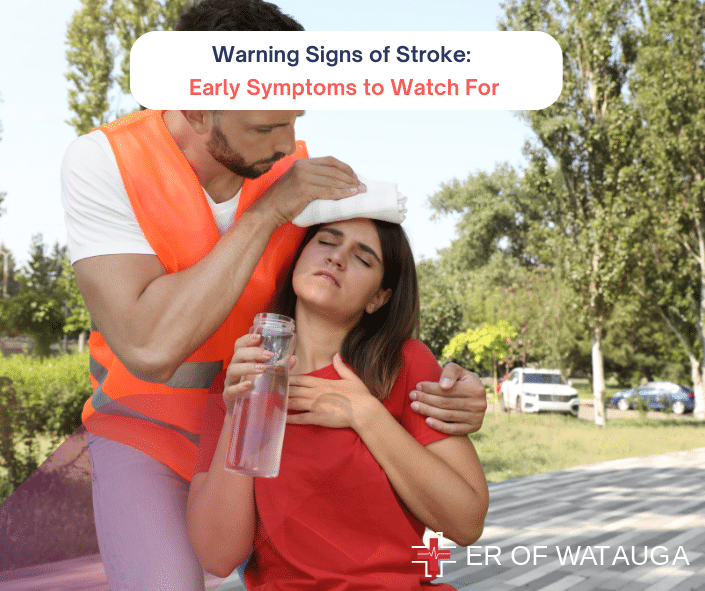Are you suspicious of having Diphtheria symptoms and want to know the causes, symptoms, diagnosis, treatment, and prevention? Don’t need to panic, you are almost there. It is a highly contagious and infectious disease caused by the bacteria Corynebacterium diphtheriae. It causes severe breathing and swallowing issues, as well as the development of skin ulcers.
Diphtheria is no longer a problem in the United States thanks to effective vaccination and better living circumstances. It is treatable with medicines. However, in severe stages, it can harm the heart, kidneys, and neurological system. Even with therapy, it can be fatal, particularly in youngsters. In this blog, we will help you know the severity of infection, its common causes, and symptoms, and how to treat and prevent it.
What is Diphtheria?

Diphtheria is a contagious infection caused by the bacteria Corynebacterium diphtheriae. The bacterium produces a toxin that causes grey tissue to accumulate in your throat, causing difficulty swallowing and breathing.
In warmer areas, someone may develop non-healing skin lesions that are coated in grey tissue. This kind of infection (known as cutaneous diphtheria) can also occur in the United States when people live in crowded and hazardous surroundings.
Where is Diphtheria found?
In many parts of the world, it is still considered endemic. This encompasses Asia, the Dominican Republic, Eastern Europe, Haiti, the South Pacific, and the Middle East.
What are the different types of diphtheria?

It has two basic types: classical respiratory and cutaneous.
Classical Respiratory Diphtheria
It is the most frequent variety of Diphtheria and can affect the nose, throat, tonsils, or larynx. Symptoms differ according to where the damaged membranes are located in your body.
Cutaneous Diphtheria
It is an uncommon kind that causes skin rash, lesions, or blisters on any part of the body. Cutaneous Diphtheria is more common in tropical climes or in densely populated areas where people live in unhealthy conditions.
How do you get Diphtheria?
Diphtheria can be contracted through airborne droplets containing bacteria (which are transferred by sneezing, coughing, and spitting) or by coming into contact with something contaminated with germs. It is also possible for an infected individual to spread the disease by contacting an open sore that someone else has touched or by touching clothing that someone else has touched. It is possible to contract multiple times.
Who’s at Risk of Developing Diphtheria?
Anyone who has not had the vaccine and comes into close contact with an infected person is at risk of contracting the infection.
What are the symptoms of Diphtheria?
Diphtheria can infect both the respiratory tract (the parts of the body that breathe) and the skin. The symptoms vary depending on whatever bodily region is afflicted. People who have been exposed typically develop symptoms between 2-5 days of being ill. If your doctor suspects you have symptoms, you should begin treatment immediately.
Respiratory Diphtheria
Bacteria most typically infect the respiratory system, which comprises the portions of the body that breathe. When bacteria enter and adhere to the lining of the respiratory system, they can cause:
- Weakness
- Sore throat
- Mild fever
- Swollen glands in the neck
The bacteria produce a toxin, which kills healthy respiratory tissues. Within two to three days, the dead tissue produces a thick, grey layer that can accumulate in the throat or nose. This thick, grey layer is referred to by medical professionals as a “pseudomembrane.” It can obstruct tissues in the nose, tonsils, voice box, and throat, making it difficult to breathe and swallow.
If the toxin enters the bloodstream, it can damage the heart, nerves, and kidneys.
Diphtheria Skin Infection
The bacterium can also infect the skin, resulting in open sores or ulcers. However, Diphtheria skin infections seldom cause severe disease.
What Causes Diphtheria?
It is a dangerous infection caused by bacteria called Corynebacterium diphtheriae, which produce a toxin. The poison can make individuals severely sick.
It is caused by germs that adhere to the lining of your respiratory system. These bacteria produce a poison that harms the respiratory tissue cells. Within two or three days, the tissue left behind develops a thick grey coating. This covering can protect tissues in your voice box, throat, nose, and tonsils. Infected people find it difficult to breathe and swallow.
How Diphtheria is Spread?
Diphtheria bacteria travel from person to person, mainly via respiratory droplets such as coughing or sneezing. People can also become ill after touching infected open sores or ulcers. Those having a higher risk of becoming sick include
Individuals living in the same household, having regular close contact with the patient or being directly exposed to secretions from the patient’s suspected infection site (e.g., mouth, skin).
Is Diphtheria Contagious?

Yes, It is a highly contagious disease transmitted via airborne droplets or infected personal items.
How is Diphtheria Diagnosed?
It can infect both the respiratory tract (the parts of the body that breathe) and the skin. The type of Diphtheria a person has determines their diagnosis and treatment. If your doctor suspects you have a respiratory infection, you should begin treatment immediately.
Doctors commonly determine whether a patient has an infection by checking for common signs and symptoms. They can swab the back of the throat or nose to detect the bacteria that cause Diphtheria. A doctor can also collect a sample from an open sore or ulcer and try to cultivate the bacteria.
If the bacteria multiply and produce the toxin, the doctor can be certain the patient has diphtheria. However, the germs take time to proliferate, so if a doctor detects respiratory infection, therapy should begin immediately.
How is Diphtheria Treated?
Treatment includes:
- Using antitoxin to prevent the bacterium toxin from harming the body. This medication is critical for respiratory infections, although it is seldom utilized for Diphtheria skin infections.
- Using antibiotics to destroy and eliminate the bacteria. This is critical for infections in the respiratory system, skin, and other regions of the body (such as the eyes and blood).
People with Diphtheria are usually no longer able to infect others 48 hours after starting antibiotics. However, it is critical to finish the entire course of antibiotics to ensure that the germs are eliminated from the body. After the patient has completed the whole course of treatment, the doctor will do tests to ensure that the germs are no longer present in the patient’s body.
What are the Complications Associated with Diphtheria?
Complications of respiratory infections might include
- Airway blockage
- Myocarditis (damage of the heart muscle)
- Polyneuropathy (Nerve Damage)
- Kidney failure
For certain people, respiratory infections can be fatal. Even with therapy, around one in every ten patients with respiratory infections dies. Without therapy, up to 50% of individuals may die from the condition.
Can I Prevent Diphtheria?

It was a frequent childhood ailment before the discovery of medicines. Today, the condition is not only treatable but also preventable through vaccination.
Diphtheria immunizations are typically coupled with tetanus and pertussis vaccines. The three-in-one vaccine is known as the tetanus and pertussis vaccine. The most recent form of this vaccination is called the DTaP vaccine for children and the Tdap vaccine for adolescents and adults.
Vaccine is one of the childhood immunizations that doctors in the United States recommend for infants. Vaccination is a series of five shots, commonly administered in the arm or thigh, given to children at the following ages:
- Two months
- Four months
- Six months
- 15-18 months
- Four to six years
Vaccines are efficient at preventing the disease. However, there may be some adverse effects. Some children may feel a minor fever, fussiness, drowsiness, or discomfort at the injection site after receiving Diphtheria, tetanus, and pertussis (DTaP) injections. Ask your doctor what you may do to help your kid reduce or eliminate these effects.
Complications are quite rare. In rare situations, the DTaP vaccine produces serious but curable consequences in children, such as an allergic reaction (hives or rash appear within minutes of injection).
The CDC recommends that close contacts of someone who has an infection receive antibiotics to avoid becoming ill. In addition to receiving antibiotics, close contacts of a person with Diphtheria should
- Monitored for probable sickness for 7 to 10 days after their previous exposure
- A sample was obtained from the nose and throat and tested
- Given a Diphtheria booster dose if they are not up to date on their immunizations
Health officials analyze each case to identify all close contacts and ensure they receive the appropriate preventive measures.
What Can I Expect if I Have Diphtheria?
Diphtheria can be treated effectively. However, even with treatment, approximately one out of every ten patients may die. Without therapy, one in every two patients may die. Vaccination is the greatest option. If you haven’t been vaccinated, schedule an appointment with your doctor.
How long does Diphtheria last?
Treatment typically takes two to three weeks to be effective. Skin ulcers can take two or three months to fully heal, although scarring may be permanent.
When to see a doctor
If you or your kid have been exposed to someone who has Diphtheria, contact your family doctor immediately. If you are unsure whether your child has been vaccinated, make an appointment. Make sure you have all of your vaccines up to date.
Conclusion
The study of Diphtheria shows how important it is to understand and fight this disease that no one talks about. We show how big the public health threat is by looking into its past, signs, and ways to stop it. Staying alert, educating people, and getting immunized are the best ways to find and fight this sneaky disease. We use knowledge as a shield and group action as a sword to deal with the complicated world of infectious diseases. We can find out about and reduce the silent danger by continuing to study it, staying committed to immunization, and taking responsibility for each other. ER of Watauga is your go-to emergency room for providing prominent healthcare services in Fort Worth and nearby areas. Contact us now to book an appointment.
FAQs
What does Diphtheria smell like?
Diphtheria has a unique sweet odor due to the toxin released by the bacterium. The smell is frequently described as like sweet, ripening grapes.
Who discovered Diphtheria serum?
Emil von Behring, a German scientist, is credited with inventing the Diphtheria antitoxin serum in the late nineteenth century, ushering in a new era in the treatment of this deadly disease.
How is Diphtheria transmitted?
Diphtheria is typically transmitted through respiratory droplets released by an infected individual while coughing or sneezing. It can also be spread by contacting infected surfaces.
What are the most prevalent symptoms of diphtheria?
Symptoms include a sore throat, fever, difficulty swallowing, and a thick greyish coating on the back of the throat, which is a sign of Diphtheria.
Is Diphtheria preventable with vaccination?
Yes, Diphtheria can be prevented with immunization. The DTaP or Tdap vaccines are effective at conferring immunity against diphtheria, tetanus, and pertussis. Regular vaccinations are essential for sustaining community immunity.






